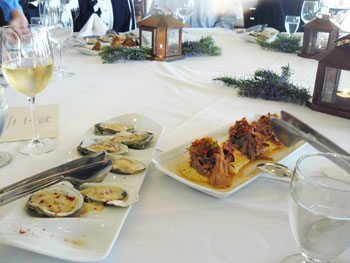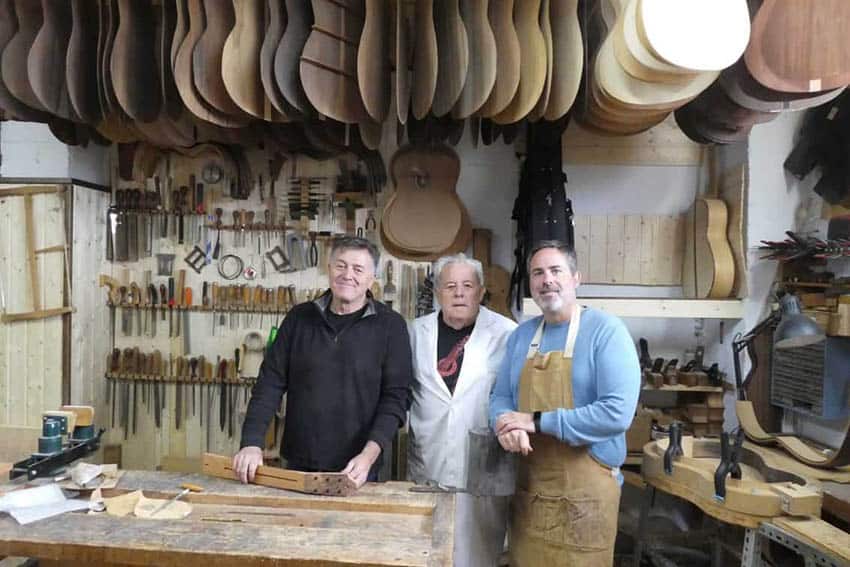
Dining Etiquette in Spain: What You Should Know Before Dining Out in Spain
By Mike James
International dining etiquette can be a treacherous business. What’s completely normal in one country can be the height of rudeness in another.

And just as it is disrespectful in many cultures to use your left ‘unclean’ hand to shake another person’s hand, knowing how to behave appropriately at the dinner table is the proper and polite way to dine with your Spanish friends and acquaintances.
Obviously, as a foreign visitor, you don’t want to unintentionally offend anyone, nor come across as an uncultured oaf, so here are 9 Spanish eating customs you may wish to bear in mind when you’re dining out in Spain.
Business Lunches or Dinners
In southern Spain, it is acceptable to be late by up to ½ hour if you’re meeting friends or family, but that is not the case for business dining.
Lunches and dinners are a vital part of establishing a good business relationship; it’s a chance to get to know each other and build trust and personal rapport. However, meals are usually not the right time to make business decisions.
Bon Appetit!
Eating is a social event in Spain where everyone comes together to enjoy a meal – together. You never just dig in as soon as your plate is set in front of you. Even when everyone’s food has arrived, you must wait for the customary ‘ ¡ buen appetito!’ or ‘ ¡b uen provecho’ to be exchanged before the meal can begin. The same goes for drinks: ‘ ¡ salud!
Use of Cutlery in Spain
Cutlery is placed on the dining table continental style, meaning forks go on the left and knives on the right. Work your way from the outside in, course by course. A fork and spoon above your plate are for dessert. The Spanish don’t as a rule switch knives and forks, perhaps with the exception of (large) spoons which may be used for pulses as well as soups. Dessert is often served with a (small) teaspoon.
How to Eat Bread
Bread is a staple on all Spanish dining tables; it accompanies every single meal.
Rather than being made available in a bread basket, individual slices of bread tend to be served on the tablecloth next to your plate or are placed on the rim of your plate, usually without butter.
Please note that dipping pieces of bread into soup is the height of bad manners! However, using a piece of bread to help push things onto the fork (which is then held in the right hand) is acceptable and commonplace in less formal dining environments.
How to Eat Olives
A national delicacy and standard condiment for any meal, nothing says Spain more than olives. But how do you elegantly dispose of the pips? Believe it or not, in bars and cheaper eateries, you are expected to just drop them onto the floor.
More upmarket restaurants will provide a bowl, or you may leave them in a neat pile on your plate. It is okay to remove the pips from your mouth with a thumb and forefinger, or do as most Spaniards do: make a fist and discreetly spit the olive pip into the hole at the top.
No Hands Under the Table

It is considered bad manners to let your hand(s) slip under the tablecloth or onto your lap when you’re not holding cutlery. Keep your hands where they can be seen at all times. Either side of your plate is a good place for your hands to rest. But please, elbows off the table!
Use your Napkin
Whether it’s fine damask cotton napkins or utilitarian paper serviettes, no Spanish diner would be without them. Napkins are considered essential for maintaining hygiene at the table, so feel free to use your liberally, after every mouthful if necessary. A napkin always goes on your lap, especially if it’s made from cloth.
Join the Conversation
The Spanish are a sociable lot who love to talk, and mealtimes are the perfect opportunity to make conversation. Loud, animated discussions, debates, and disagreements are the norm, with everyone happy to talk over each other in an effort to be heard, and no topic is off-limits. Lose your British reserve and dive in – no need to be shy about expressing your opinion; you will all still be friends at the end of the meal.
After the meal
Don’t make the mistake of thinking that it’s time to go when the last plates have been cleared away. Far from it, with everyone fully sated now is the time to relax at the table, savoring each other’s company, perhaps sharing another drink… If the atmosphere is convivial, you could be there for hours.
Sobremesa (literally ‘over the table’) is a typically Spanish custom that refers to the art of conversation after a meal.

Mike James, is a freelance writer working together with Marbella’s longest-running real estate agent Panorama.es.
Eurail Passes: What to Know about Buying a Europe Train Pass
- These 9 U.S. National Parks Require Reservations in 2024 - April 17, 2024
- Take a Hike in Olympic National Park - April 17, 2024
- The Wild Mississippi: 2340 Miles Across Ten States - April 8, 2024





